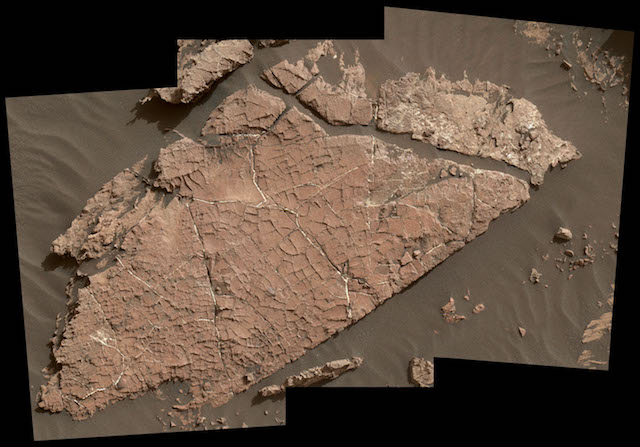 Scientists used NASA’s Curiosity Mars rover in recent weeks to examine slabs of rock cross-hatched with shallow ridges that likely originated as cracks in drying mud.
Scientists used NASA’s Curiosity Mars rover in recent weeks to examine slabs of rock cross-hatched with shallow ridges that likely originated as cracks in drying mud.
“Mud cracks are the most likely scenario here,” said Curiosity science team member Nathan Stein. He is a graduate student at Caltech in Pasadena, California, who led the investigation of a site called “Old Soaker,” on lower Mount Sharp, Mars.
If this interpretation holds up, these would be the first mud cracks — technically called desiccation cracks — confirmed by the Curiosity mission. They would be evidence that the ancient era when these sediments were deposited included some drying after wetter conditions. Curiosity has found evidence of ancient lakes in older, lower-lying rock layers and also in younger mudstone that is above Old Soaker.
“Even from a distance, we could see a pattern of four- and five-sided polygons that don’t look like fractures we’ve seen previously with Curiosity,” Stein said. “It looks like what you’d see beside the road where muddy ground has dried and cracked.” (…)
The team used Curiosity to examine the crack-filling material. Cracks that form at the surface, such as in drying mud, generally fill with windblown dust or sand. A different type of cracking with plentiful examples found by Curiosity occurs after sediments have hardened into rock. Pressure from accumulation of overlying sediments can cause underground fractures in the rock. These fractures generally have been filled by minerals delivered by groundwater circulating through the cracks, such as bright veins of calcium sulfate. [More at link]








